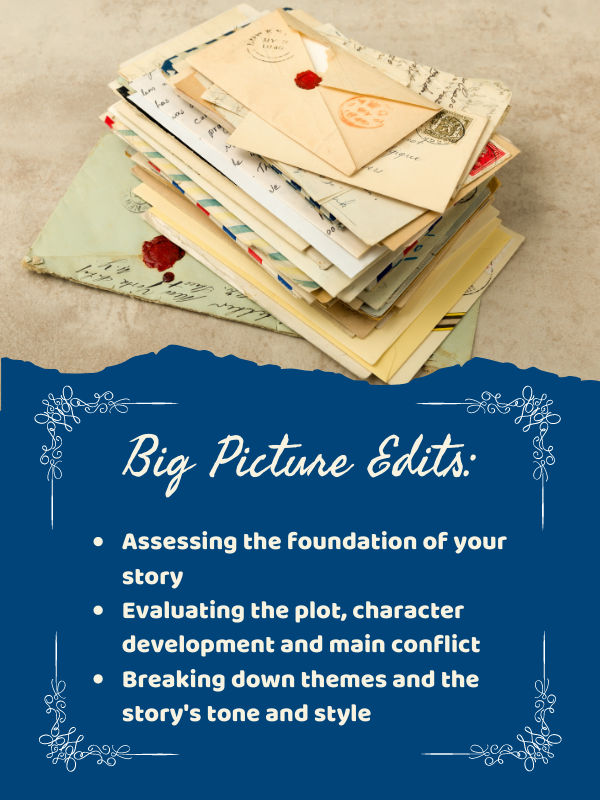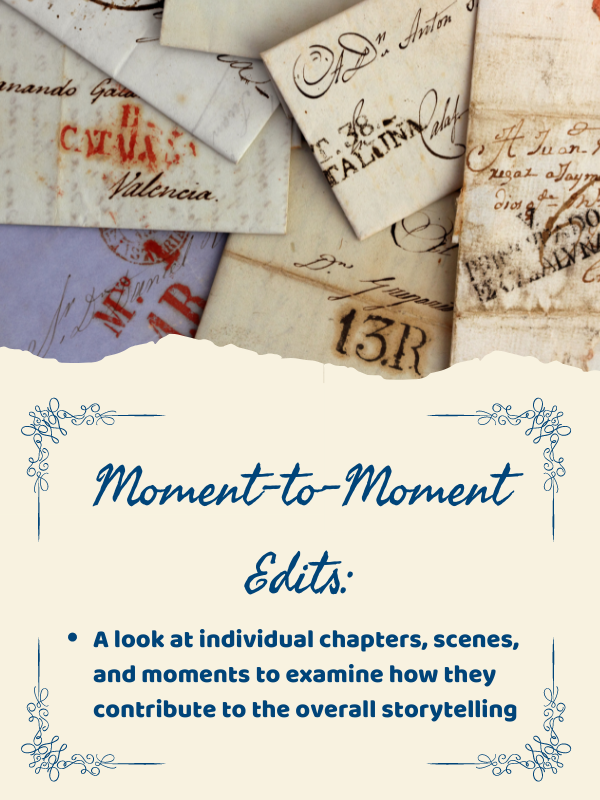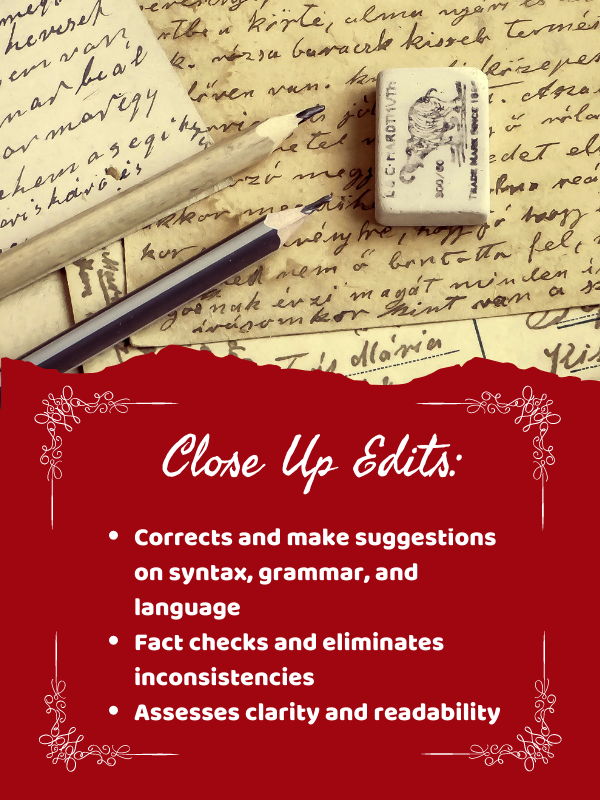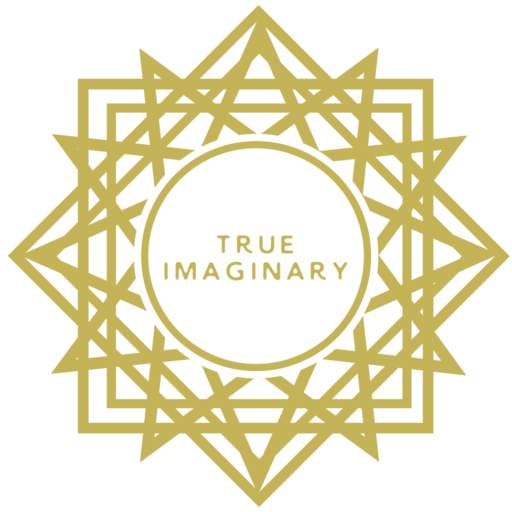As an editor, one of the first questions I have for anyone looking to hire someone like me is, “What type of editing are you looking for?” I have found that while most writers know the basics of what editors can offer them, many are fuzzy on the different stages of editing and what titles or key words to look for when looking for the right editor for them. Sometimes you’re looking for someone who can simply fix typos and grammatical errors. Other times, you are looking for a full assessment of story, character, and themes.
Truthfully, there are many blurred lines within these stages and each editor is going to have their own divisions and list of services offered under various titles. But I hope this article helps you to see the framework of how most books are edited and that you will better understand the merits of each phase.

Big Picture Edits
There are a few different names for this type of editing. Developmental, structural, substantive, and story editing all usually refer to this first stage of evaluation. A substantive editor looks at building blocks of your story (the plot, characters, structure, style, themes, dialogue, pacing, etc.), and attempts to break down any issues with these elements within your manuscript while highlighting its best features.
A good substantive editor is not only going to tell you what is and isn’t working in your piece, but also will help you to problem solve by breaking down each element that needs further attention and making suggestions that will help lead you to the right solution for each.
Increasingly, many publishers and even agents are looking for manuscripts that have already been in the hands of a substantive editor or expert readers. Ideally, authors will have already started working with these professionals to work out the major kinks that are inevitable in the first few drafts of writing. Investing in this service will set you apart from many of the other manuscripts that find their way into those gatekeepers’ mailboxes.

Moment-To-Moment Edits
Once you have the overall story elements worked out, the next stage will be to get a line (or stylistic) editor who can help you improve your sentence structure, fine tune the language, and help to clean up any issues related to consistency, clarity, and flow. This is the first edit that will actually deal with exactly what you have written on the page and will adjust to fix errors or to make improvements.
Line editing ranges from light to heavy — usually determined in a consultation between the writer and the editor. If your language use and styling is very strong and you are simply looking for someone to fix a few awkward sentences, look for inconsistencies, and flag passages that might cause confusion, you will want a light line edit. Manuscripts that still contain structural or stylistic issues on a larger scale would likely need a heavier hand. Editors who provide this service usually either transition from substantive edits and will determine the level of editing based off a consultation or will do a sample edit before signing contracts to determine the level of editing needed.
Anyone submitting to a major contest, self-publishing, or that really wants to set themselves above others when seeking a publisher or agent should consider investing in line editing. A great line editor can be your hone your best possible voice and style.

Close Up Edits
The third person to look over your manuscript is the copyeditor. There is so much nuance and changing rules of language within English today and this expert’s job is to make sure there are no grammatical, spelling, or syntax errors within your work. If you’re publishing your book with a publishing house, that imprint will also have preferences laid out in a house style guide. Copyeditors will make sure that your work follows all of these guidelines correctly.
You might not be aware that a copyeditor does more than just look for grammatical errors or typos. They are also responsible for fact checking any details that are connected to our world and make sure that the details you have created stay consistent. Writing a fantasy with dozens of made up names and places? They are going to make sure they are spelled the same on each occurrence. They will also let you know if your lead has blonde hair in one place and brown in another.
Those publishing with a traditional publishing house will have their manuscript sent to a copyeditor at the cost of the publisher. This is not a service that I would recommend investing in when there is still the possibility of future edits. These are detailed edits and you want to make sure they are looking at the manuscript in its final form. Those self-publishing should absolutely invest in a copyedit.
Proofreading
With tens of thousands of words within a book, it is natural that a few issues will slip through even with the best line and copyeditors working on it. (A good copyeditor usually has about a 90-95% rate of catching errors.) A proofreader is the last line of defence in fixing any issues before the book is sent off to the printer. They are also the person who will make sure all of the proper formatting markers have been placed on the book, so that it will look its best when printed or turned into an ebook.
Proofreading is another service that is provided by publishing houses. Again, this is something worth investing in if you are self-publishing. And if you are self-publishing, there are several proofreaders who also do book formatting, allowing you to bundle these steps.
Hiring editors is going to be one of the biggest and most important investments that you will make in your book. If you would like more information about what rates are standard at each level of editing, check out this Editors Canada page.


